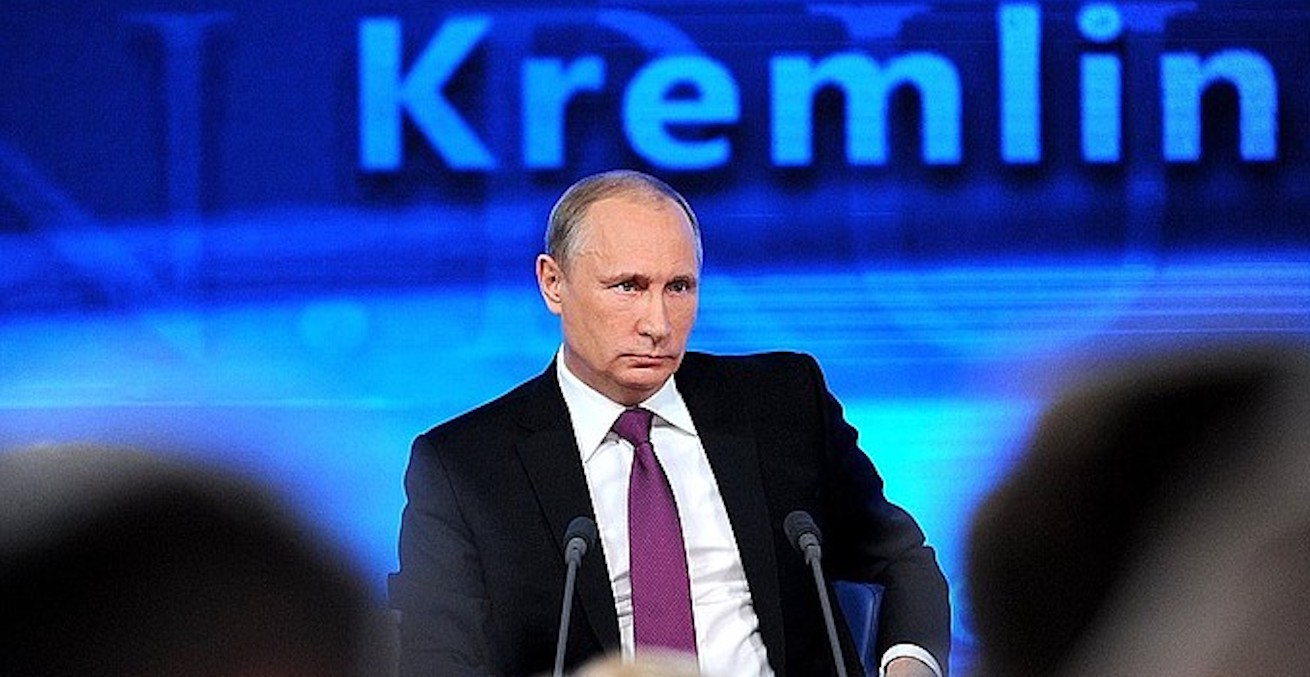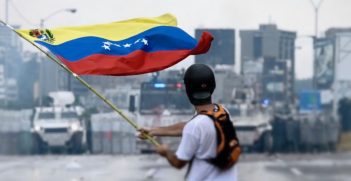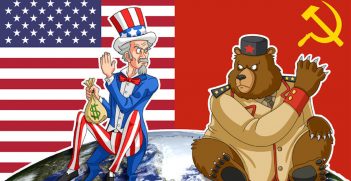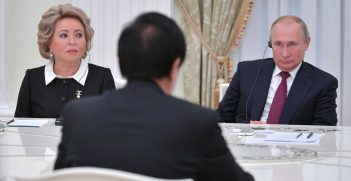The Russian Election: Putin and the Seven Dwarves

Under an amendment to the Russian Constitution in 2008, this year’s presidential election was postponed for ten days in deference to International Women’s Day. It is opportune to consider the predicted victory of Putin over his seven opponents.
In popular commentary, there is unanimous consensus that Vladimir Putin is assured of a landslide victory in his bid for a fourth presidential term. As a result, attention has turned to the issue of whether voter participation might be a better indicator of the extent of popular disaffection with significant aspects of his governance. It appears to be a concern to be taken seriously in Putin’s campaign platform. Within his team, the response has been a focus on a 70/70 strategy, that is, a goal of a 70 per cent turnout and a win of 70 per cent of the vote.
It is an ambitious aim. During the last seventeen years, the highest recorded voter turnout was 69 per cent in 2008 and—at least according to the official Russian Electoral Commission tallies—it has mostly been in the low- to mid-sixties in other years. In addition, in recent years there has been a steady decline of approximately 10 per cent in voter turnout. In the same period, polling by the independent Pew Global organisation, the Levada Centre, and the State-owned Russian Public Opinion Research Centre (VCIOM) have reported that both pessimism about the future of the Russian economy and a negative assessment of the government’s handling of corruption have intensified.
According to Pew Global, the number of Russians concerned about their economic prospects has increased by 13 percentage points since mid-2015. Similarly, there has been a 20 per cent fall in points to just under half the population with regard to the Kremlin’s corruption reduction initiatives.
Unsurprisingly, these areas of public concern were targeted in Putin’s recent 2018 State of the Nation Address, which had the aura of an election campaign launch. Many of its promises are straight from the World Bank playbook, including poverty alleviation, improved educational opportunities, better efficiency in the community services sector, strategic government investment in small businesses that produce specialised niche market goods for export and the privatisation of banks and other state-owned businesses.
Interestingly, the address also talked of a more open-door policy aimed at attracting world-leading scientists and other skilled people to Russia. The country, Putin said, is poised for a surge in growth and development given its record low-level inflation, political and economic stability and rising GDP. Significantly, the latest IMF Russia Report echoes Putin’s optimism, revising its economic forecast for the country’s GDP growth in 2018 upwards to two per cent. The report indicates that this rebound has come more quickly than anticipated because economic contraction due to falling oil prices and sanctions was much shallower than expected, cushioned by the Russian government’s agile economic management.
By contrast, Putin’s State of the Nation Address had a great deal less to say about his country’s endemic corruption, beyond the tacit acknowledgement that it remains a serious problem and that something needs to be done about it. There is also the oblique suggestion that, in compliance with Russia’s World Trade Organisation membership, stronger government monitoring of regulatory controls on the delivery of government services, as well as on banks and other businesses, might help.
Which raises the perennial question of whether this time around Putin’s claim of the presidency will justifiably be deemed to have been marred by electoral corruption. Often at the centre of such accusations is the anti-Putin figure Alexei Navalny, whose street theatre of protest, online YouTube clips, repeated short-term imprisonments and call for an election boycott have greatly enhanced his appeal to Western media outlets.
However, Navalny appears to have negligible domestic support. He is a non-system political actor banned from running for the presidency because of, as he insists, trumped-up charges of embezzlement. Internal polling estimates his public recognition at around 55 per cent of the population and his current electoral appeal at 1.5 per cent. Both of which statistics suggest he is not, as commonly described, an “Opposition Leader” who represents a challenge to those he has reviled as the crooks and thieves in the Kremlin. Nor is he any kind of liberal-minded democrat. Rather he is a dedicated nationalist who has allied himself with two of the more extremist right wing movements: the Movement Against Illegal Immigration, which was banned in 2011, and Great Russia, which celebrates Russian ethnic pride.
Among the seven other contenders for the presidency, Ksenia Sobchak and Pavel Grudinin have perhaps attracted the most attention outside Russia. A declared liberal with a commitment to evolutionary reform, Sobchak appears to have little popular support. Pre-polling estimates that she will have around two per cent of the vote. Pavel Grudinin is one of the more colourful figures. The candidate representing a revamped Russian Communist Party, he currently runs the very profitable and productive Lenin strawberry collective outside Moscow. The collective recently replaced the grey, humourless image of Cold War communism with a poster of a handsome, youthful Lenin in worker’s cap and blue jeans. Though the figures are rubbery, at a current estimate of a likely 10 per cent of the vote, he will be the runner-up to Putin.
Dr Dorothy Horsfield is a Visiting Fellow in the ANU College of Arts and Social Sciences. Her most recent book, Russia in the Wake of the Cold War Perceptions and Prejudices, was published in 2017.
This article is published under a Creative Commons Licence and may be republished with attribution.





